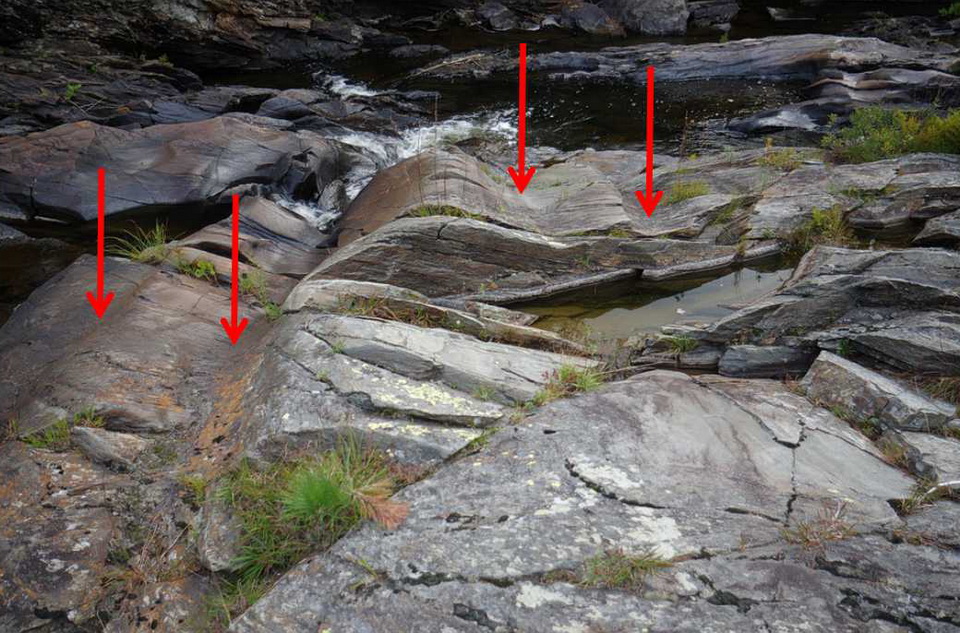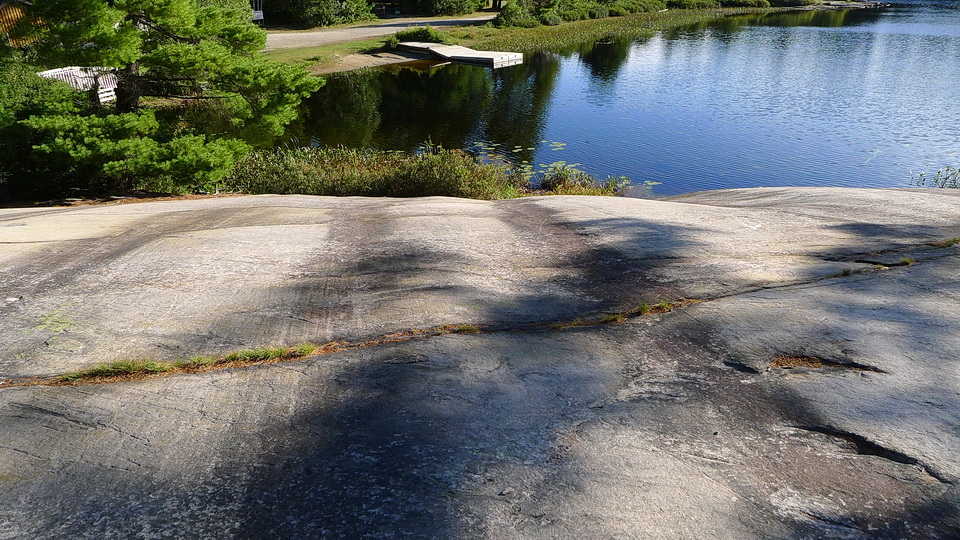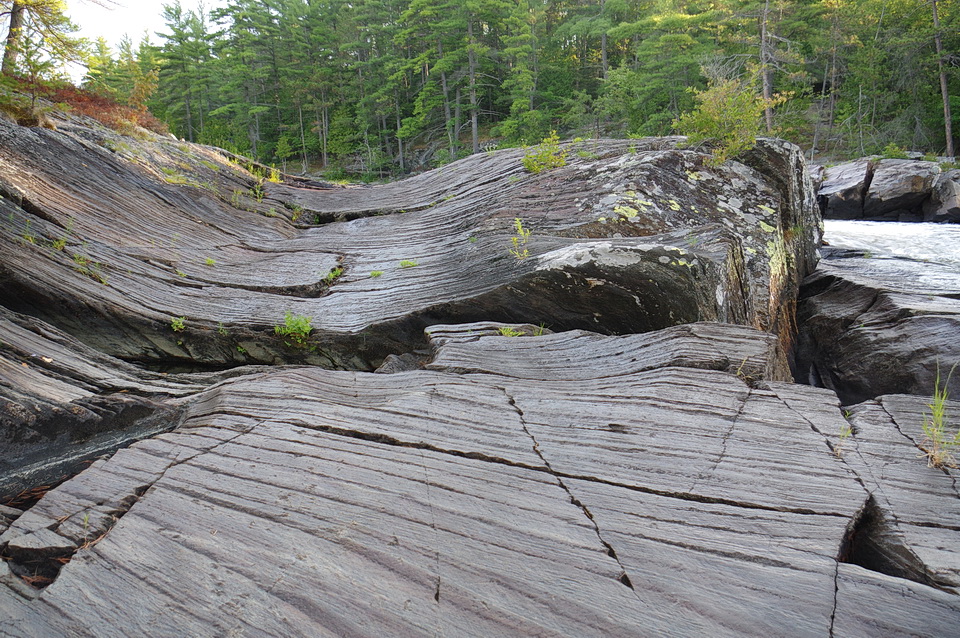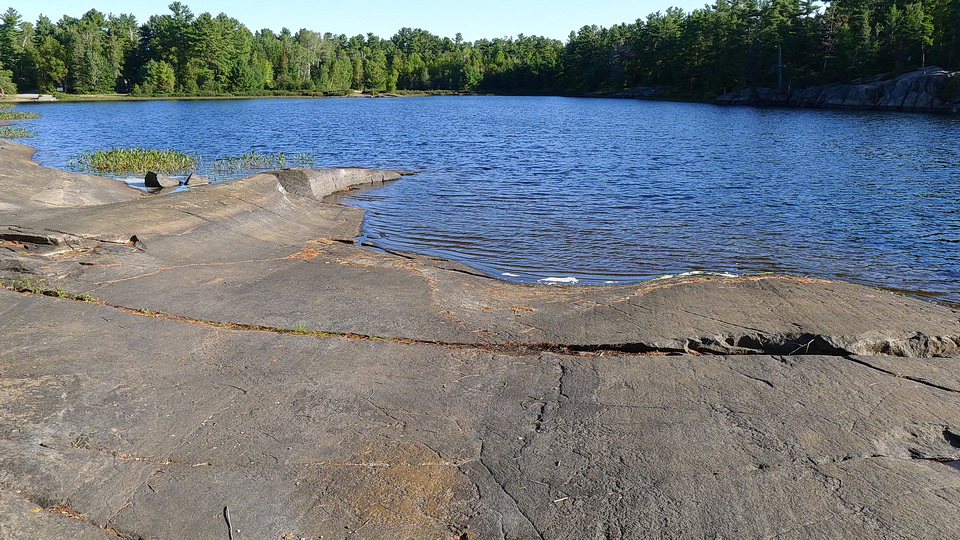Ice Age: The Geological Story of Glacial Grooves
What Is A Glacial Groove?
A glacial groove is a long, linear trough that was scoured into solid bedrock by the great ice sheet which covered almost all of Canada during the last ice age. Often the grooves occur in sets of parallel furrows, or troughs (Figure 1).
Figure 1: Several parallel glacial grooves are identified by the red arrows. The glacial grooves were created by the slow movement of the massive glacier that once covered almost all of Canada. As glacier slowly moved, or flowed, across the rock land, the glacier scoured troughs, of furrows, into the bedrock. The rock and grooves are exposed in the Aux Sables River, Chutes Provincial Park, Ontario, Canada. Photo by Andy Fyon, Sept 11/18.
How Are Glacial Grooves Made?
Glacial grooves were created beneath a glacier. The grooves were created by the slow movement of the massive glacier that once covered almost all of Canada. As glaciers slowly move, or flow, across the rock land, they pick up pieces of rock from the size of tiny clay to large boulders. The boulders, sand and clay materials were trapped under the glacial ice. As the glacier moved, some the trapped material was dragged along the surface of the rocks beneath the ice. The rock fragments acted like sandpaper and they abraded the rock as the glacier pushed and pulled them along. That abrasion gouged out softer rock beneath the glacier to form the grooves. The grooves are exposed when the glacier melts.
What Is The Shape Of A Glacial Groove?
Most glacial grooves are straight. They can be several meters in length. They can be several centimeters to several meters in width and several centimeters in depth (Figure 2).
Figure 2: The dark, linear depressions running from the lake up hill are glacial grooves. The dark stain appears to be a type of algae that prefers to grow along the depressed groove, perhaps because of slightly increased moisture content. Location: Gut Lake Trail, Grundy Lake Provincial Park. Photo by Andy Fyon, Sept. 12/15.
How Do Geologists Use Glacial Grooves?
Glacial grooves give geologists information about the direction the ancient glacier moved. The path of the glacier’s movement is parallel to the long direction of the glacial groove.
Additional photos of glacial grooves
Figure 3: A wide glacial groove that is about 2 meters across. Location: Chutes Provincial Park. Photo by Andy Fyon, Aug. 9/18.
Figure 4: A very shallow, but broad glacial groove created during the last ice age. Location: Gut Lake Trail, Grundy Lake Provincial Park. Photo by Andy Fyon, Sept. 12/15.
Have A Question About This Note?
Andy Fyon, Oct 27/18.




